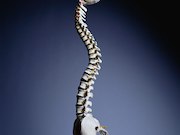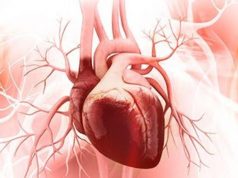Continuous and remote past HT users had less kyphosis in minimally-, fully-adjusted models
FRIDAY, Feb. 23, 2018 (HealthDay News) — Menopausal hormone therapy (HT) use is associated with less pronounced kyphosis compared with never-use, according to a study published online Feb. 16 in Menopause.
Gina N. Woods, M.D., from the University of California in San Diego, and colleagues examined the correlation between Cobb angle of kyphosis from lateral spine radiographs and pattern of self-reported HT use during the previous 15 years. Data were included for 1,063 women from the Study of Osteoporotic Fractures.
Participants were characterized as never-users of HT (46 percent), remote past users (24 percent), intermittent users (17 percent), and continuous users (12 percent). The researchers found that, compared with never-users of HT, continuous users had a mean Cobb angle that was 4.0 degrees less, in minimally-adjusted models (P = 0.01); in fully-adjusted models, the correlation was attenuated to 2.8 degrees (P = 0.06). Compared with never-users, remote past HT users had 3.0 degrees less kyphosis, in minimally-adjusted models (P = 0.01); the correlation was attenuated to 2.8 degrees less kyphosis in fully-adjusted models (P = 0.02). There was no difference in the degree of kyphosis for intermittent users versus never-users.
“Women reporting continuous or remote past HT use had less pronounced kyphosis than never-users by their mid-eighties, suggesting a possible role for HT in the prevention of age-related hyperkyphosis,” the authors write.
Abstract/Full Text (subscription or payment may be required)
Copyright © 2018 HealthDay. All rights reserved.








